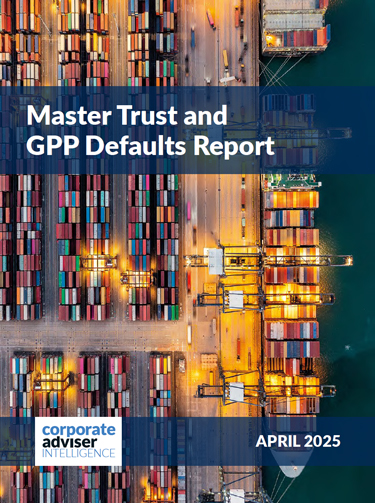DC pension providers are on track to meet 2030 net zero goals, having achieved a 15.6 per cent reduction in their carbon footprint over the past 12 months, according to Corporate Adviser’s latest DC Pensions Responsible Investment Report.
TO DOWNLOAD A COPY OF THE REPORT CLICK HERE
Across the DC workplace market the average carbon footprint now stands at 54.9 tonnes of carbon dioxide emitted per million pounds (tCO2e/£m).
The report shows that pension schemes are progressing on net zero trajectories, despite the more charged political debate around climate change, decarbonisation and fossil fuels — which has seen a number of US asset managers move away from ESG reporting and responsible investment strategies.
This report collates information from 19 leading workplace pension providers and nine of the largest asset managers working across this DC pension market – which collectively manage more than £12 trillion globally. This is the sixth year that Corporate Adviser has published its report on responsible investment strategies across the DC landscape, collating exclusive data alongside key metrics and information from providers’ TCFD reports.
The report highlights a growing schism when it comes to responsible investment strategies between UK and European firms and their US counterparts, with a number of larger US asset managers recently quitting investor coalitions such as Climate Action 100+ and The Net Zero Asset Managers initiative (NZAMI).
Overall NatWest Cushon and The People’s Pension have the lowest carbon footprint, at 31 tCO2e/£m and 31.5t CO2e/£m respectively. The People’s Pension has seen the largest year-on-year reduction to their carbon emissions, reducing the scheme’s carbon footprint by 55 per cent.
Mercer was another scheme with has significantly reduced its carbon footprint, with the figure down 50.2 per cent year on year.
In contrast the report found that LifeSight, Hargreaves Lansdown and Legal & General had the highest carbon footprints. LifeSight has a footprintof 84 tCO2e/£m for its diversified growth fund, although it also disclosed a carbon footprint for its equity fund of 57 tCO2e/£m. Meanwhile HL has a footprint of 83.4 tCO2e/£m, while Legal & General has 81 tCO2e/£m for the growth phase pathway for its master trust default.
The report also shows there is now more uniformity in how schemes report backward and forward-looking carbon and climate change metrics. All DC providers for example now report on the proportion of holdings aligned to the Science-based Targets initiative (SBTi) as a means of showing likely future progress towards net zero goals.





